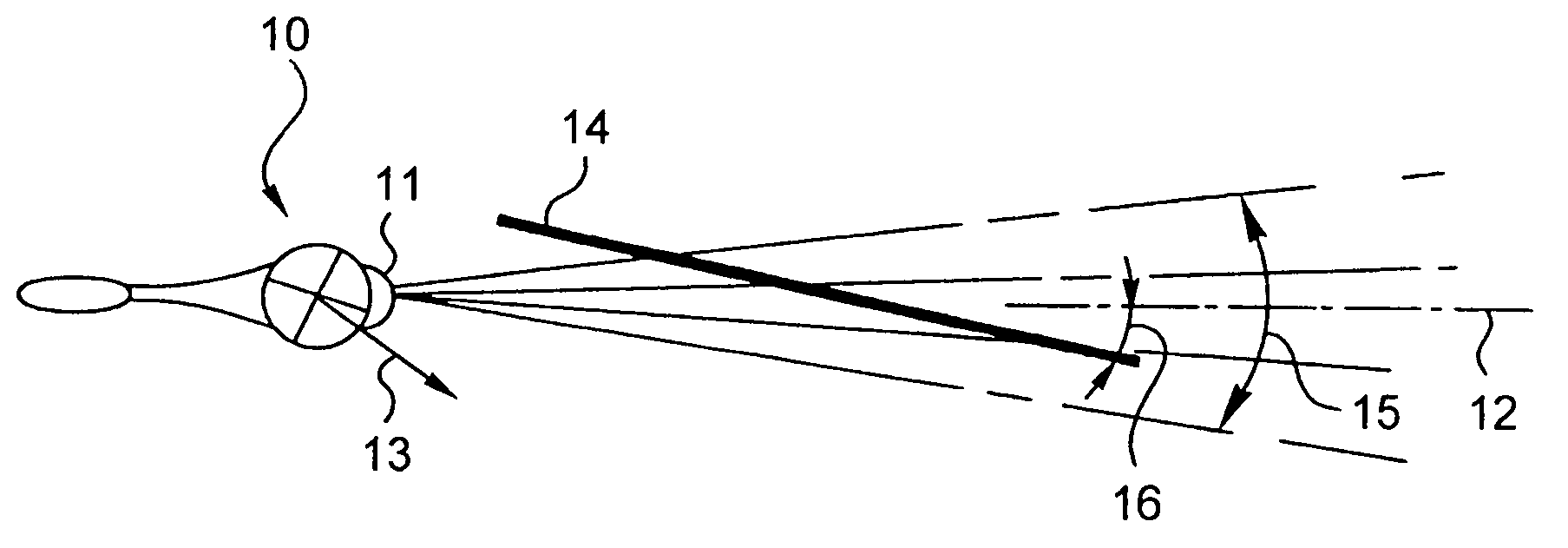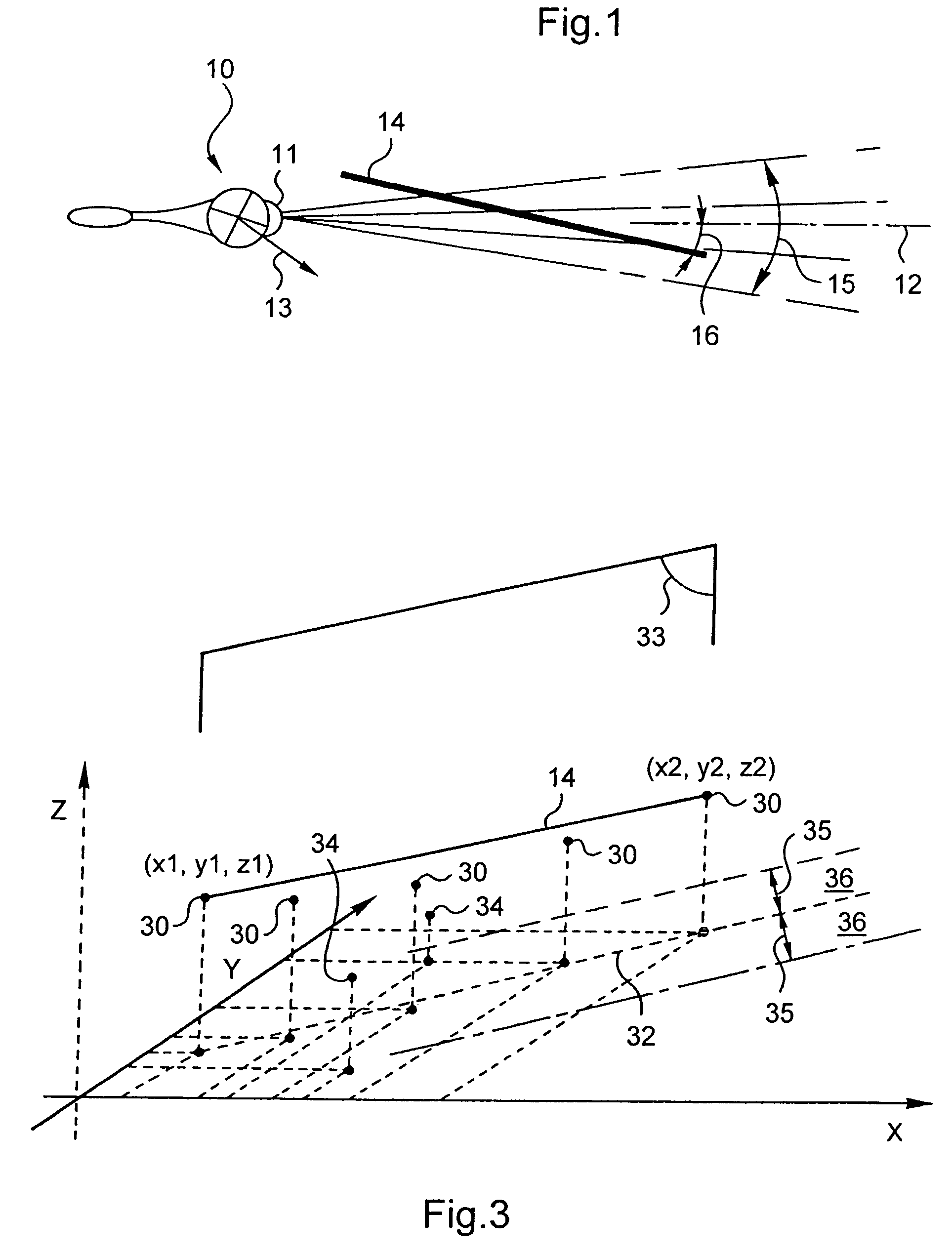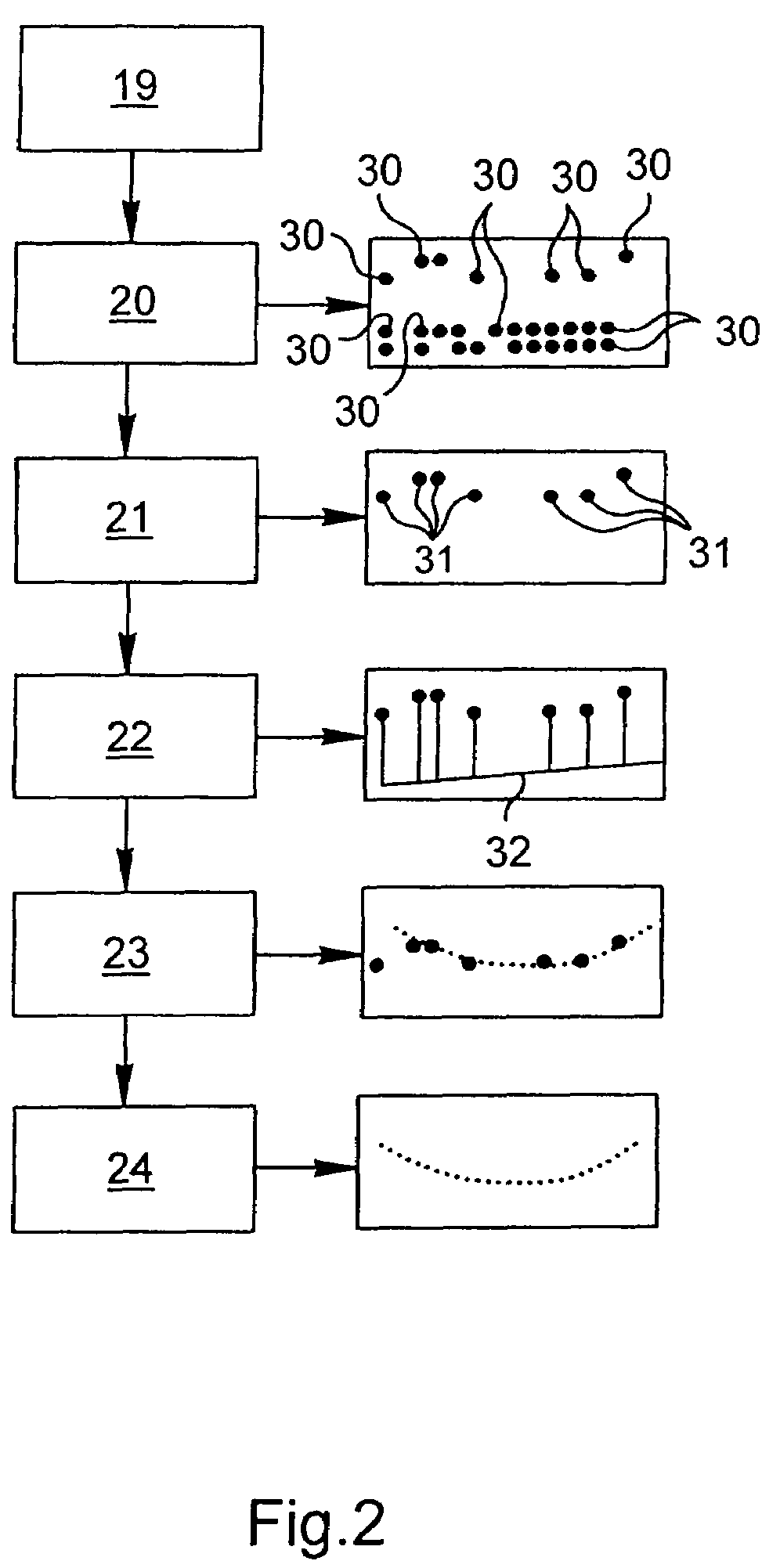Method of detecting suspended filamentary objects by telemetry
a technology of suspended filaments and telemetry, which is applied in the field of rotary-wing aircraft manufacturing, can solve the problems of ineffective weather conditions, inability to detect suspended filaments by telemetry, and large computation time required for methods
- Summary
- Abstract
- Description
- Claims
- Application Information
AI Technical Summary
Benefits of technology
Problems solved by technology
Method used
Image
Examples
Embodiment Construction
[0028]Unless specified to the contrary, the term “plot” can be understood as being used below to designate a “point”.
[0029]In order to detect cables in robust manner on board a helicopter, it is preferable to use an active scanning sensor, in particular a LIDAR (light detection and ranging) or a RADAR. Such sensors acquire “raw” plots in spherical coordinates: elevation (S), azimuth (G), and range (D).
[0030]Using the components (Vx,Vy,Vz) of the velocity vector V and the attitude data (roll (φ), pitch (θ), heading (φ)) of the aircraft as delivered by an inertial unit, for example, coordinates (x,y,z) are calculated in a rectangular coordinate system that is terrestrial (referenced to the ground), e.g. by means of an on-board computer.
[0031]With reference to FIG. 1, a helicopter 10 is fitted with a Lidar 11 scanning a sector of the space extending on either side of a sighting axis 12.
[0032]The helicopter is moving along a vector 13; a cable 14 extends in part in the field 15 of the t...
PUM
 Login to View More
Login to View More Abstract
Description
Claims
Application Information
 Login to View More
Login to View More - R&D
- Intellectual Property
- Life Sciences
- Materials
- Tech Scout
- Unparalleled Data Quality
- Higher Quality Content
- 60% Fewer Hallucinations
Browse by: Latest US Patents, China's latest patents, Technical Efficacy Thesaurus, Application Domain, Technology Topic, Popular Technical Reports.
© 2025 PatSnap. All rights reserved.Legal|Privacy policy|Modern Slavery Act Transparency Statement|Sitemap|About US| Contact US: help@patsnap.com



